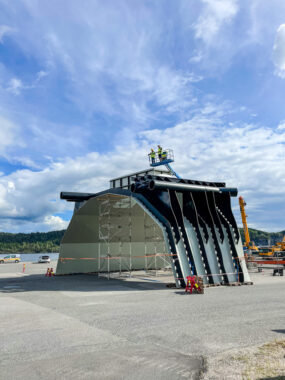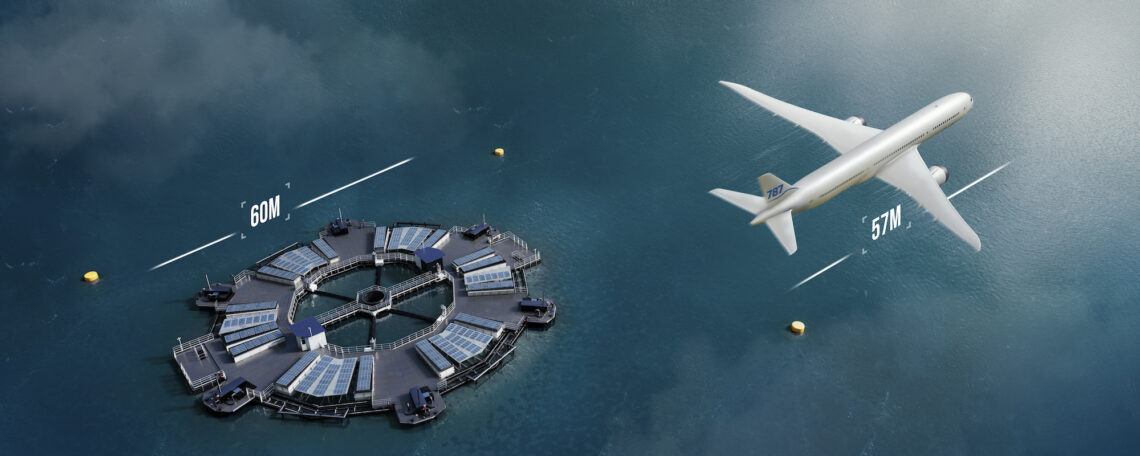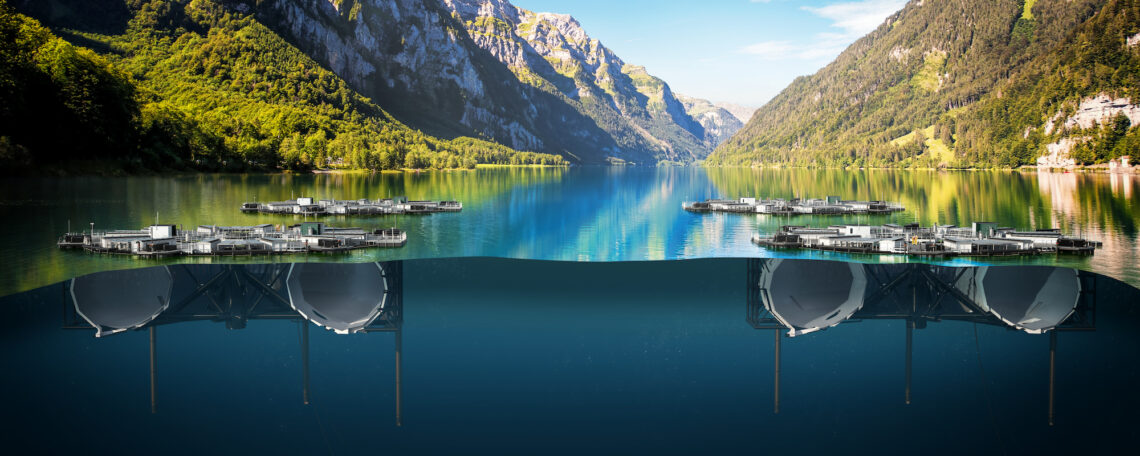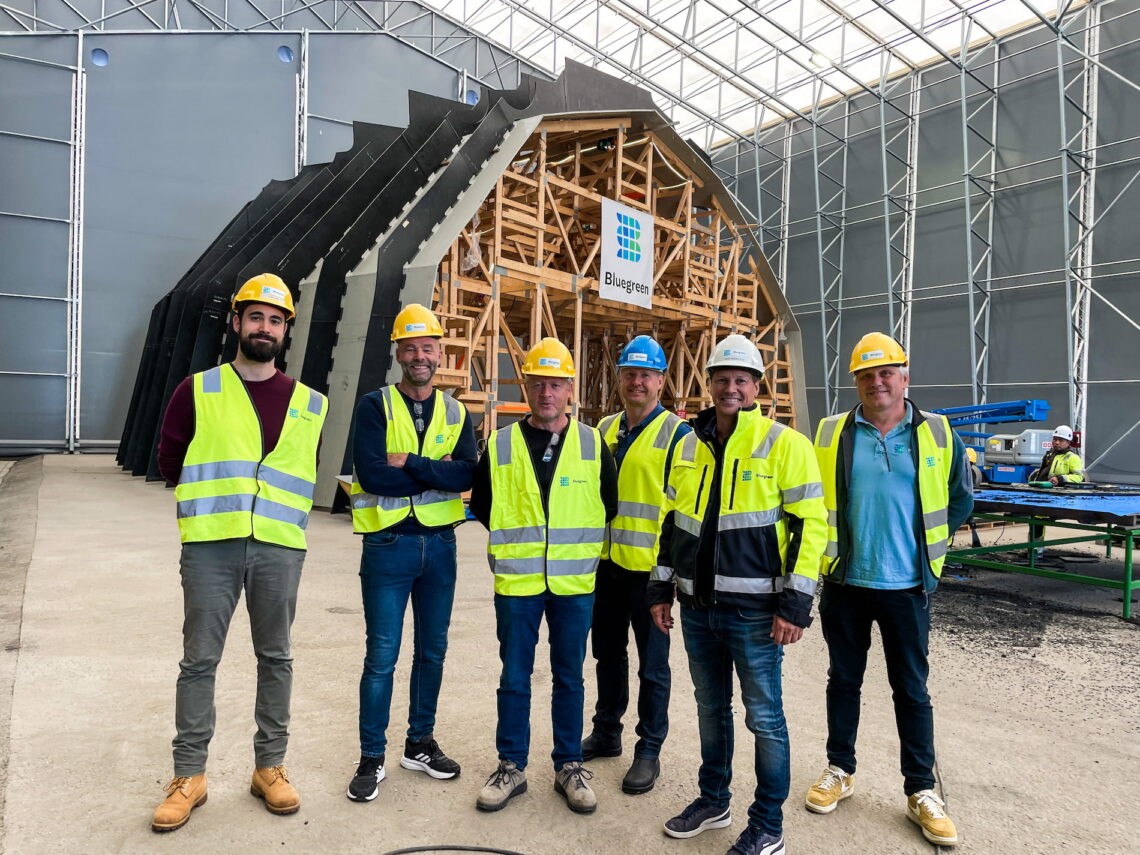The idea for the doughnut-shaped fish farming facility came in 2015. Now SalMar and Bluegreen have signed a contract to take over the development concessions and build the first Marine Donut.
It was Mowi that was awarded two development permits by the Directorate of Fisheries in 2019. For various reasons, the project was never realized, and in June it was announced that Bluegreen bought the permits from Mowi. When SalMar took responsibility for carrying out the development concession project and entered into a contract for the construction of the first Marine Donut.
Nils-Johan Tufte, CEO of Bluegreen, is pleased that the innovation is finally coming to fruition, saying that he could not have had a better partner than SalMar:
“SalMar is offensive, forward-looking and ambitious. They are not afraid to explore new technology that solves the challenges facing the industry. We are impressed by their investment in offshore farming, and we hope that Marine Donut can be an important piece in this.:
Roger Bekken, executive director of SalMar, said this about the investment:
“We have entered into an agreement with Bluegreen because they have a forward-looking and knowledgeable organisation. SalMar has always been innovative and is therefore interested in using new technology to produce healthier food. Marine Donut is an exciting concept and we look forward to helping to develop this further together with the supplier.”
Construction already in full swing
At the construction site of Bluegreen in Bamble, the construction of Marine Donut is already in full swing. The aim is for it to be completed and transported to Molde during the winter/spring of 2023. As soon as it is installed and tested, the development concession project will be carried out in line with the Norwegian Directorate of Fisheries’ commitments and criteria.
The fish farming facility will be the world’s largest thermoplastic construction, and will have a diameter of a whopping 60 metres, a volume of 22,000 cubic meters and weigh just under 500 tonnes.
Project manager Geir Andresen, partner in Bluegreen, admitted that it is demanding to build such a large building in thermoplastics, but that no one is better equipped to do it than Bluegreen:
“Bluegreen has a turnkey contract for the project. It is a big responsibility, but I dare say that no one in the world is more competent for this job than us. Our people have already built closed flow-through facilities such as FishGlobe and Preline, and bring valuable experience with them.”
“This is groundbreaking work. We establish the shipyard facility, auxiliary structures and the main structure, at the same time! Fortunately, we took the chance to order in critical production machines in the early phase, now several of these have extremely long delivery times,” Andresen said, and says that they have also developed a very special welding machine for this assignment.

Customers and partners contribute
Bluegreen has important subcontractors in the various specialist areas as part of the team. Not least, the customer SalMar, as one of the world’s largest fish farmers, contributes with enormous experience and expertise that the project benefits from:
“We have learned an incredible amount since we started talking to SalMar. They have had valuable input that has lifted the project, especially in terms of functionality and risk assessment from the user’s perspective,” Tufte said, adding “We feel the energy from both SalMar and partners. Everyone has the attitude: This is something we must achieve together!”

Marine Donut is a flow-through plant with sludge collection. The facility will hold 1,100 tonnes of MTB (maximum permitted biomass). According to the development concessions, fish are to be introduced in two different cycles, from approximately 2.5 to 5.5 kg, but the plant will probably also function for post-smolt production.
The system has a water intake below the lice belt and the closed membrane prevents escape, and is packed with digitization and sensors.
“By eliminating the lice problem, the traffic light system should be able to be utilized positively,” Tufte said. “We hope that there will be a new licensing regime specifically aimed at the type of technology that Marine Donut represents, so that the concept can contribute to achieving the growth ambition that Norway has set within the farming industry.”
“Our goal is to demonstrate that despite the fact that the Donut has a higher capex than traditional cages, the costs per kg of fish are competitive. The costs of feed and medicine go down, fish health and fish quality go up. In addition, the facility provides smarter logistics for the fish farmer. Overall, this results in increased profitability.”

A dream that comes true
For Tufte, this is a dream that comes true.
“It is now seven years since I drew the first sketches of the Donut, and eventually took out a patent. There have been ups and downs but I have never lost faith. It’s incredibly nice to now be paid for your persistence! With SalMar on the team, we have every opportunity to unleash the full potential that resides in the concept.”
Tufte was recently at North America’s largest aquaculture fair in Canada. He can tell that there was enormous interest in Marine Donut also “across the pond”.
“The response was overwhelming, both from the industry and the media. We are now starting a parallel race in Newfoundland in the wake of the Norwegian project. In North America there are bigger waves and tidal differences, so the concept has to be modified to the local conditions.”
“But we will make it happen!,” Tufte conluded, smiling broadly.










